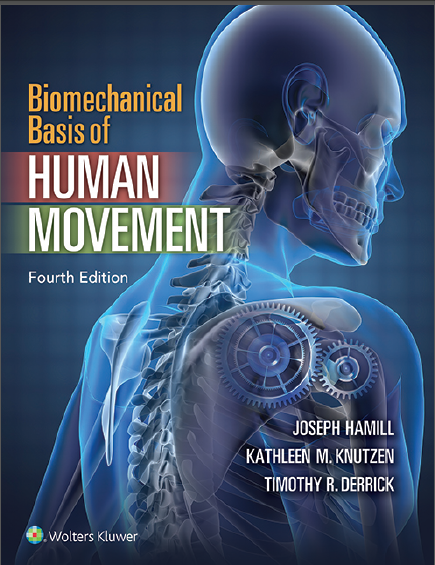In this post you can download pdf of Biomechanical basis of Human Movement from here
Biomechanics is a quantitative field of study within the discipline of exercise science. This book is intended as an introductory textbook that stresses this quantitative (rather than qualitative) nature of biomechanics. It is hoped that, while stressing the quantification of human movement, this fourth edition of Biomechanical Basis of Human Movement will also acknowledge those with a limited background in mathematics. The quantitative examples are presented in a detailed, logical manner that highlight topics of interest. The goal of this book, therefore, is to provide an introductory text in biomechanics that integrates basic anatomy, physics, calculus, and physiology for the study of human movement. We decided to use this approach because numerical examples are meaningful
and easily clear up misconceptions concerning the mechanics of human movement Organization
This book is organized into three major sections: Part I: Foundations of Human Movement; Part II: Functional Anatomy; and Part III: Mechanical Analysis of Human Motion. The chapters are ordered to provide a logical progression of material essential toward the understanding of biomechanics and the study of human movement. Part I, Foundations of Human Movement, includes Chapters 1 through 4. Chapter 1, “Basic Terminology,” presents the terminology and nomenclature generally used in biomechanics. Chapter 2, “Skeletal Considerations for Movement,” covers the skeletal system with particular emphasis on joint articulation. Chapter 3, “Muscular Considerations for Movement,” discusses the organization of the muscular system. Finally, in Chapter 4, “Neurologic Considerations for Movement,” the control and activation systems for human movement are presented. In this edition, some of the foundation material was reorganized and new material was added in areas such as physical activity and bone formation, osteoarthritis, osteoporosis, factors influencing force and velocity
development in the muscles, and the effect of training on muscle activation.
Part II, Functional Anatomy, includes Chapters 5 through 7 and discusses specific regions of the body: the upper extremity, lower extremity, and trunk, respectively. Each chapter contains general information The first part of each region. In this edition Information about muscles and ligaments was transmitted from Chapter text appendix for ease of review Positions and movements of muscles and ligaments. the exercise The department was reorganized to provide a common rehearsal Exercises used in each area.
Finally analysis The activities selected at the end of each chapter are: More comprehensive muscle analysis based on Results of the EMG examination. Part III, Mechanical Analysis of Human Movement, Contains chapters 8-11. Mechanical method for analyzing human movements It is presented. Chapters 8 and 9 introduce this concept Linear and angular kinematics. the agreement Investigation of linear and angular movements in analysis Human movements are also discussed in detail in these two chapters.
Part of each chapter is devoted to review Search the literature on human movements and wheelchairs Move and golf. These activities are used throughout
The third section explains the quantitative method. Chapters 10 and 11 introduce the concept of linearity Kinematics of angles, including the discussion of forces
Torque that affects the human body during the day Activity. The laws of motion are presented and explained. Forces and couples are discussed here Applied to body parts while walking. Although the book follows a progressive order, The main sections are generally independent. therefore, Coaches may skip certain classes or not insist. For example, Parts I and II can be used in traditional Kinematics course and the third part can be used for biomechanics era.

